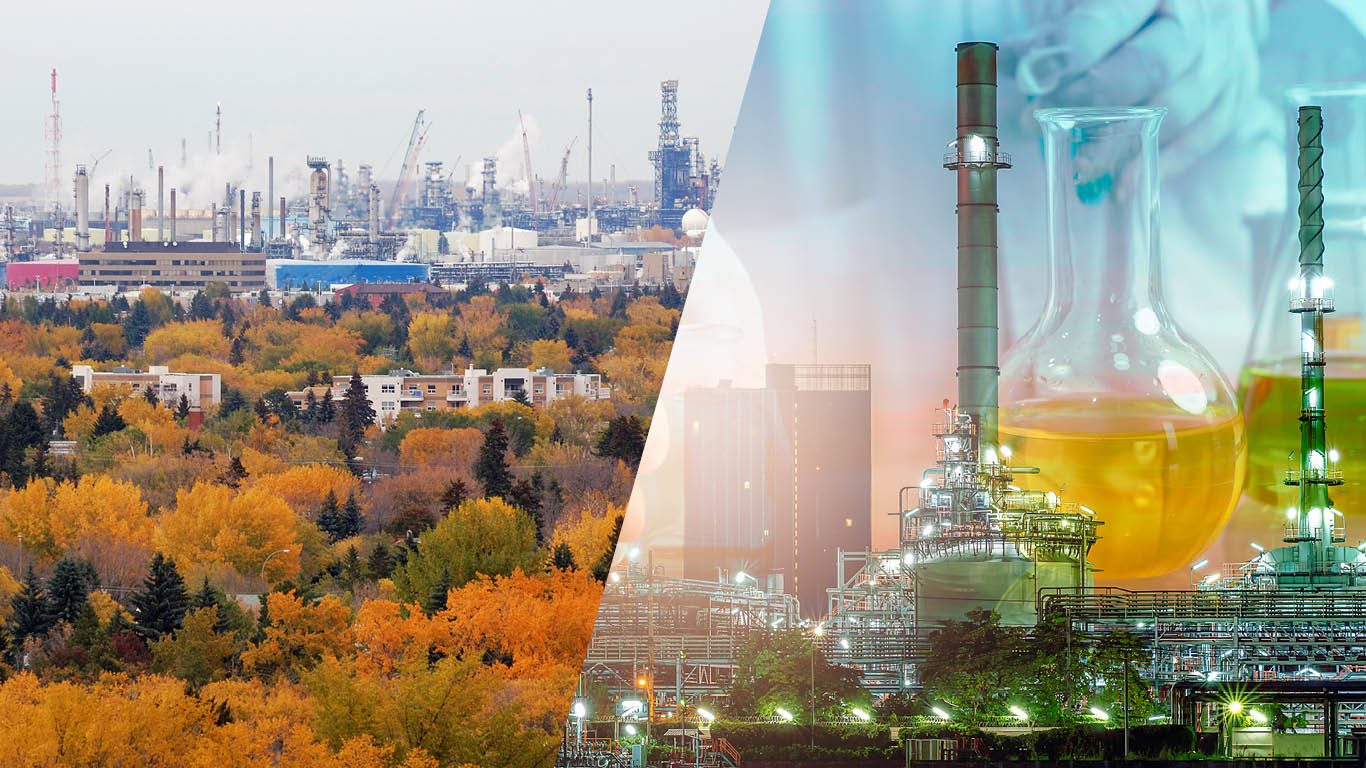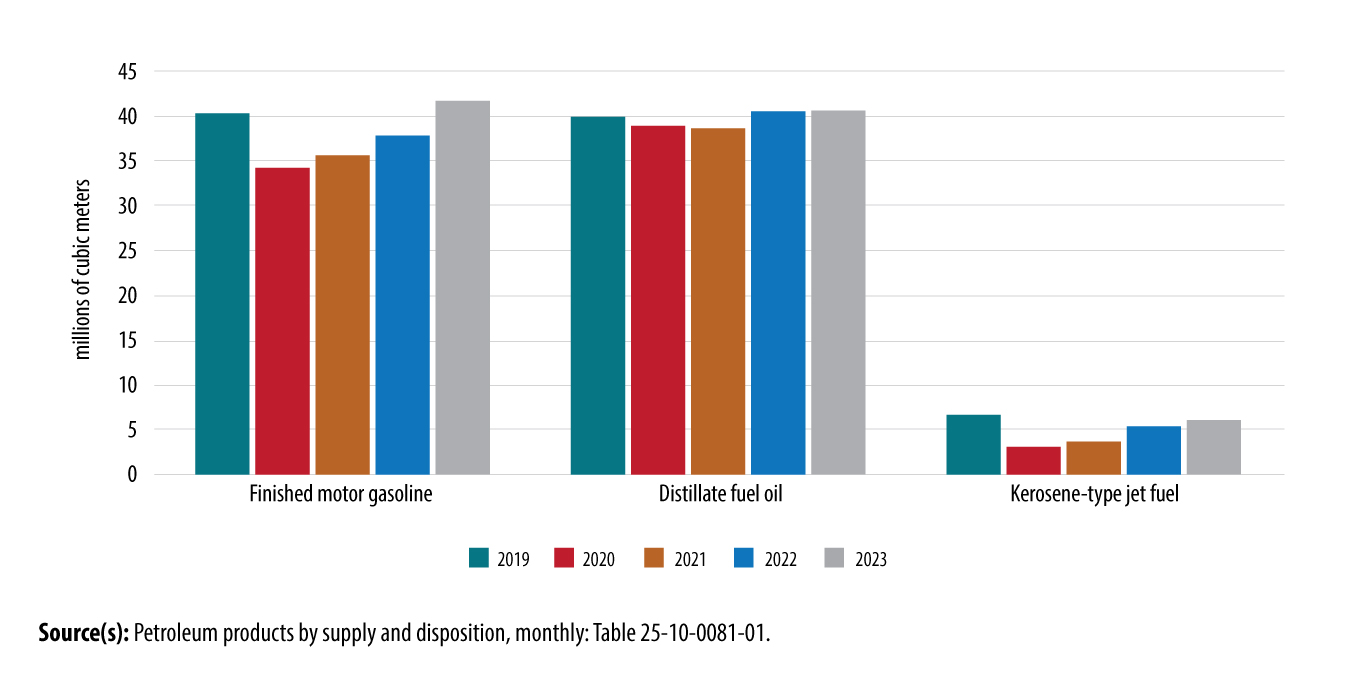
While Canada continues to invest in green alternatives, according to the latest data, refined petroleum products such as gasoline still powered 94.2% of passenger vehicles on the road, virtually all planes fly on kerosene jet fuel, and distillate fuel oil keeps trucks trucking and trains on track.
In 2023, the transformation of crude oil into refined petroleum products took place in 17 refineries across Canada, involving a complex chemistry. The process is constantly evolving, with both public and private investments in research and development (R&D). According to Natural Resources Canada, R&D for the purposes of crude oil upgrading and petroleum refining aims to increase value and market access, and improve efficiency of refining operations. The focus is also on increased efficiency of pipeline transportation (especially for crude bitumen, which requires the use of diluent) and minimizing associated greenhouse gas emissions and other environmental impacts.
In 2023, ongoing and emerging geopolitical conflicts in Eastern Europe and the Middle East continued to impact global production, consumption and prices of refined petroleum products.
Canadian refining of finished petroleum products rose for the third consecutive year, up 3.9% from 2022 to 120.7 million cubic metres in 2023—a return to pre-pandemic levels.
Canada is not ranked among the top refiners of petroleum products in the world. Nonetheless, Canadian refineries could have filled 48,000 Olympic-sized swimming pools with their 2023 production.
Finished motor gasoline set a record for monthly production in July 2023. For its part, production of kerosene-type jet fuel hit a four-year high in August. The ramp-up in production was mainly due to more vehicles on the road and more people flying, two activities which were curtailed during the pandemic. Meanwhile, Canada's eight largest airports received 30.8% more passengers in 2023 compared with a year earlier. Similarly, lower gas prices in 2023 made driving more affordable during the summer travel season. Overall, the prices Canadians paid for gas at the pump fell 7.6% in 2023.
On a year-over-year basis, finished motor gasoline production rose 10.1% to 41.8 million cubic metres in 2023, while kerosene-type jet fuel was up 13.7% to 6.2 million cubic metres.
Chart 1: Production of finished petroleum products, key fuels

Description - Chart 1: Production of finished petroleum products, key fuels
The title of the chart is “Production of finished petroleum products, key fuels”.
This is a bar chart.
The vertical axis shows the production of finished petroleum products from 0 to 45,000,000 cubic meters in increments of 5,000,000.
The horizontal axis shows 15 bars, from left to right, under three category names titled “Finished motor gasoline”, “Distillate fuel oil”, and “Kerosene-type jet fuel”, with each category also having 5 bars representing the years 2019, 2020, 2021, 2022, 2023.
On the horizontal axis from left to right under “Finished motor gasoline”, for 2019 production was 40,411,778 cubic meters, for 2020 production was 34,341,882 cubic meters, for 2021 production was 35,721,915 cubic meters, for 2022 production was 37,967,887 cubic meters, and for 2023 production was 41,808,350 cubic meters.
On the horizontal axis from left to right under “Distillate fuel oil”, for 2019 production was 40,005,829 cubic meters, for 2020 production was 39,063,734 cubic meters, for 2021 production was 38,378,781 cubic meters, for 2022 production was 40,681,365 cubic meters, and for 2023 production was 40,741,295 cubic meters.
On the horizontal axis from left to right under “Kerosene-type jet fuel”, for 2019 production was 6,765,955 cubic meters, for 2020 production was 3,125,044 cubic meters, for 2021 production was 3,740,896 cubic meters, for 2022 production was 5,432,595 cubic meters, and for 2023 production was 6,175,434 cubic meters.
Source(s): Petroleum products by supply and disposition: Table 25-10-0081-01.
Production of distillate fuel oil (diesel fuels and fuel oils) edged up 0.1% year over year to 40.7 million cubic meters in 2023, just above pre-pandemic levels.
In Canada, domestic demand for refined petroleum products increased for the third consecutive year, rising 0.5% from 2022 to 103.1 million cubic metres in 2023. Leading the year-over-year gains were kerosene jet fuel (+13.6% to 8.4 million cubic metres) and motor gasoline (+2.2% to 42.9 million cubic metres).
In terms of international trade, refined petroleum products maintained a positive balance in 2023, with exports (17.9 million cubic metres) almost doubling imports (9.1 million cubic metres). Exports rose 3.7% while imports fell 4.5%, further strengthening the trade balance. In volume terms, exports of distillate fuel oil led the increase (+4.0%), while motor gasoline imports fell by over one-quarter (-26.1%) from 2022.
To learn more about refined petroleum data, check out the Refined petroleum products dashboard on the Canadian Centre for Energy Information portal. To follow refined petroleum products data throughout the year, keep an eye on the monthly Energy Statistics release.
If you enjoyed this article, you may also wish to view other energy 2023 year-in-review articles:
- Published March 5, 2024 - Hydroelectricity dries up amid low precipitations and record high temperatures: Electricity year in review 2023
- Published March 7, 2024 - Record high crude oil production largely driven by oil sands: Crude oil year in review 2023
- Published March 14, 2024 - Record natural gas production driven by industrial deliveries – Natural gas year in review 2023.

StatsCAN app
Did you know you can read StatsCAN Plus articles and more on the StatsCAN app? If you’re already using the app, let us know what you think by leaving a review in the App Store and Google Play.
Contact information
For more information, contact the Statistical Information Service (toll-free 1-800-263-1136; 514-283-8300; infostats@statcan.gc.ca) or Media Relations (statcan.mediahotline-ligneinfomedias.statcan@statcan.gc.ca).
